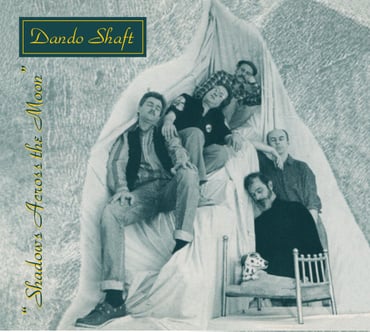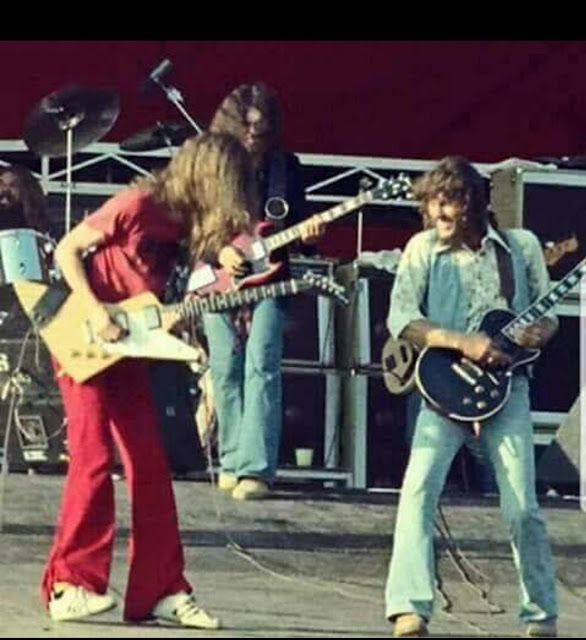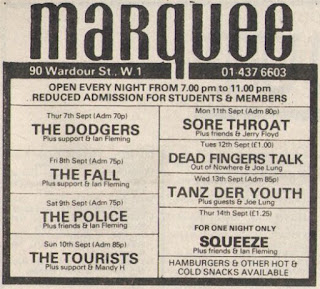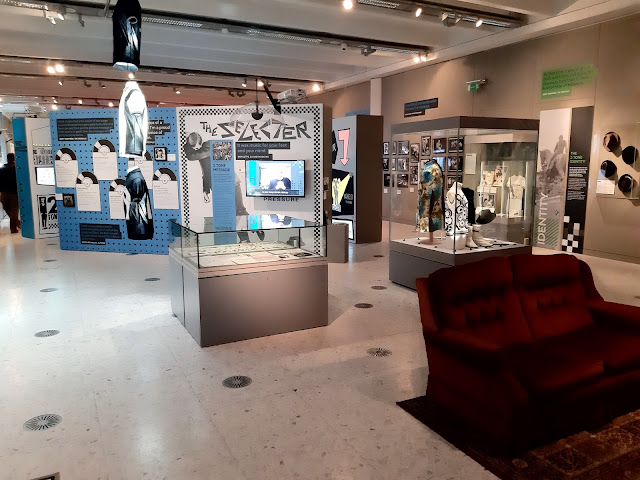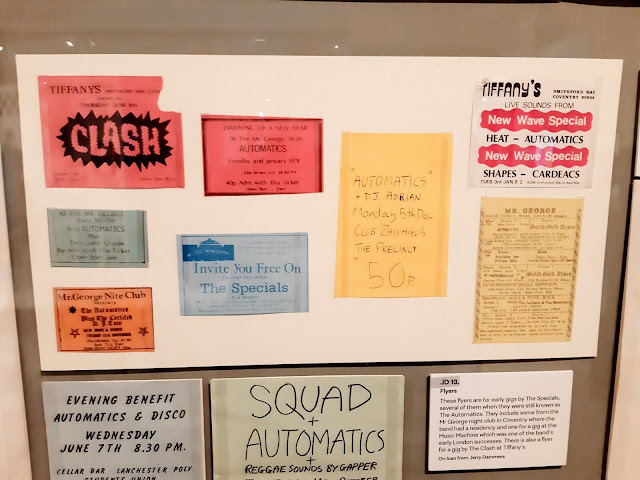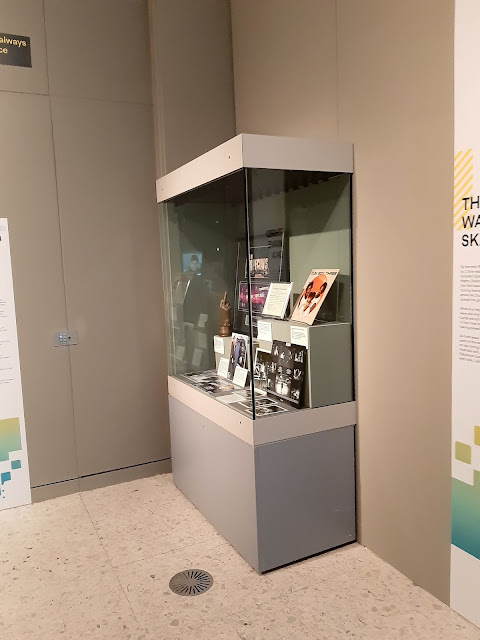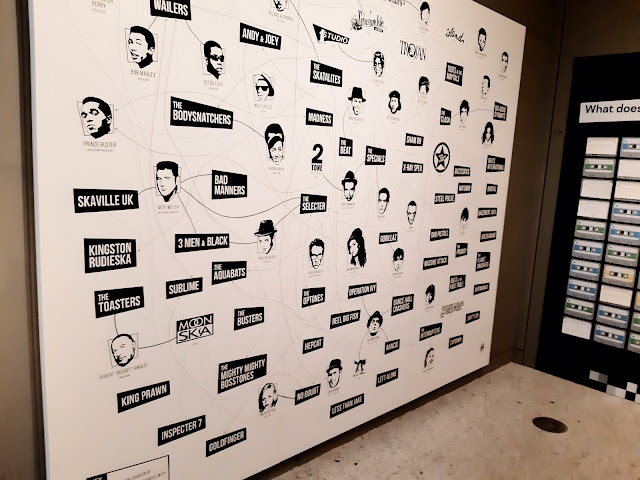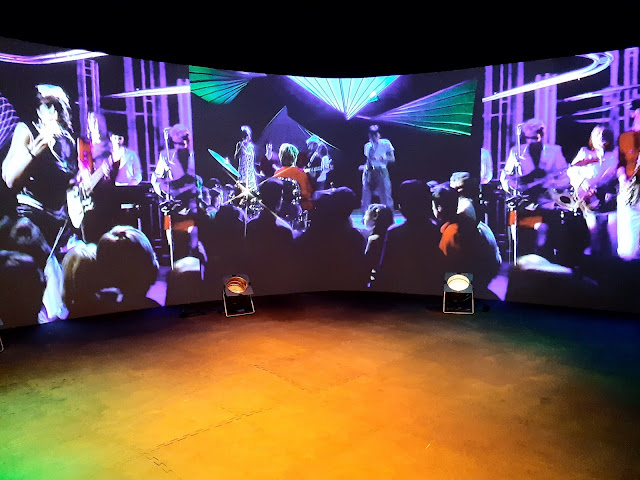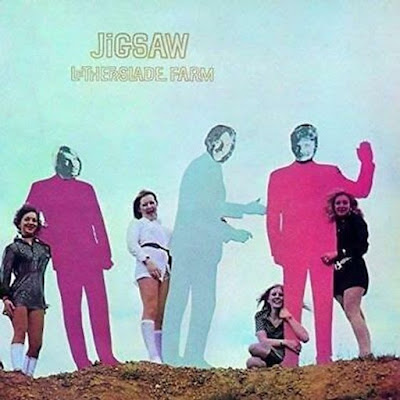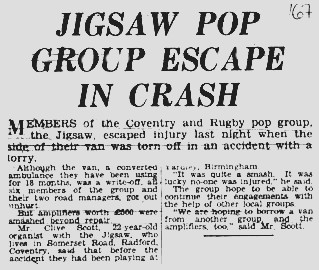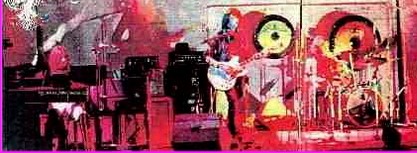Jigsaw – 1969
by Pete Clemons
When Jigsaw came together the band members had already had already gained experience from groups the likes of The Mighty Avengers, Pinkerton’s Colours and The Fortunes amongst others. By mid 1969 Jigsaw had released several singles and were in the studio, recording a fresh one, where they were interviewed.
Interestingly the single failed to materialise, possibly because things were a bit fluid and the band were in between labels. Also the interview was conducted prior to the release of Jigsaw’s debut album Leatherslade Farm released on the Phillips label.
Jigsaw had just come from the studio where they had been putting the finishing touches to their new single ‘Standing On My Head’ written by organist Clive Scott. They all felt that the song was really strong and felt that, after two years together, the recording scene was just starting for them.
Clive commented: ‘We feel much happier now that we’ve got Chas Peate and Alan Keene Music looking after the recording side and the new songs are working out nicely. Mind you, our first single ‘One Way Street’, did quite well, and got a lot of plays in the discotheques, especially in the Midlands’.
As Jigsaw’s act was largely visual, wasn’t there a problem trying to select the right kind of material to project the group’s image?. ‘It is a problem’ sad Clive ‘but we try not to categorise ourselves musically anyway. We just do what we feel is right for us and hope for the best!’.
The group seems pop orientated, but there is no question of ‘selling out’, because primarily, they play the way they want to play. Said Tony Britnell: ‘We play the kind of numbers we like, but present them in a way that appeals to the audience. So we might do Brian Auger’s ‘Black Cat’ perfectly straight, except that there’d be a tap dance on dustbin lids in the middle of it!’
All the members of Jigsaw have wide musical tastes, ranging from The Nice and the Mothers to Spooky Tooth and Jon Hiseman’s Colosseum, and this shows in the variety of material that they play. Clive Scott explained ‘Having two saxophones in the group gives us tremendous scope, especially as Tony doubles on harmonica. So we might do a soul number first, then a blues with Tony on harmonica while Kevin Mahon, the other horn man, nips off to change for a comedy piece’.
Comedy and presentation are the group’s strong points. Their act had to be seen to be believed, always relying on the unexpected. Fire eating, flame throwing, smoke bombs, interspersed with genuinely funny and skillful comic songs and characterisations. Fred Crun, the folk singer who wrote all of Bob Dylan’s songs, and that well known cleric, the Rev. Ian Parsley, were each liable to put in an appearance, and it’s not unusual for the audience to witness a concert performance consisting of lead guitar, bass and rhythm balloons. Des Dyer said that all the comedy routines and effects go down a storm, especially with the university and cabaret audiences, but added that they have to be careful when they’re throwing flames around.
Jigsaw were an incredibly hard working band who were eventually rewarded for their efforts with the world wide, timeless classic, Sky High.
Additional material from the Hobo Coventry A to Z of bands.
Circa 1966 – 1978 – Freakbeat / Pop source including the press cuttings via the Broadgate Gnome
Clive Scott (organ, vocal), Kevin Mahon (tenor), Tony Britnel (tenor, vocal), Tony Campbell (guitar), Barry Bernard (bass), Des Dyer (drums).
Formed in April 1966 by ex members of The Mighty Avengers (Campbell / Mahon), Pinkertons Assorted Colours (Bernard), The Fortunes (Britnel) and The Transatlantics (Scott).
Main strengths were Scott/Dyer’s songwriting talents (they’d previously placed songs with Engelbert Humperdink, as well as The Mighty Avengers).
Although formed in 1966, their debut disc wasn’t until 1968.Their second single release was written by Alan Bown, who’s own band Alan Bown Set, were label mates on MGM’s Music Factory subsidiary. They recorded a number of good Pop/Psych/Progressive singles and albums before a 1975 UK Top Ten, with the unashamedly pop ‘Sky High’
See below for more from Des Dyer.
Singles:
A:One Way Street/ B:Then I Found You (MGM 1410 1968)
A:Mr. Job/ B:Great Idea (Music Factory CUB4 1968)
A:Let Me Go Home/ B:Tumblin’ (Music Factory CUB6 1968)
A:One Way Street/ B:Coffucious Confusion (Philips 6006112 1970)
A:Lolipop & Goody Man/ B:Seven Fishes (Fontana 600 7071 1970)
A:Keeping My Head Above Water/ B:? (Philips 600 6131 1971)
A:Jesu Joy Of Man’s Desiring/ B:? (Philips 600 6182 1971)
Albums:
Leatherslade Farm (Philips 630 9033 1970)
Aurora Borealis (Philips 630 8072 1971)
Broken Hearted (BASF BAG22291075 1973)
I’ve Seen The Film (BASF BAP5051 1974)
Des Dyer.
“I was in one band previous to Jigsaw with two names. In 1962/3 I started a band with my cousin Dave Hagan, we are the same age and we grew up living next door to each other. We always sang together, and would raid my older brother’s record collection to listen to and learn new stuff . We could naturally harmonise together without even thinking about it.
Dave played the euphonium at school and we would go out at Christmas time carol singing, me singing and Dave playing his euphonium. It was a nice sound but we never made a fortune! My brother bought loads of American records and we learned songs by the Platters, the Diamonds, mostly vocal harmony groups, but there was a favourite of ours entitled “Black Leather Trosers and Motorcycle Boots” by a band called “The Cheers”, we loved it! We particularly liked the Everley Brothers, Jan & Dean, and the Beach Boys so we thought we’d think of a name relating to the surfing scene, so we called ourselves the “Surf Cyders”, pretty ironic as we were slap bang in the middle of the UK about as far from the sea as you can get! We decided to misspell the “Siders” part of the name as “Cyders” because at the time we were getting the taste for cyder by telling the landlord at the off licence part of the local pub we were buying it for our parents. We were of course under age at the time. We thought spelling cyder this way was a really cheeky idea, as there was a reference to alcohol in the band’s name, and nobody twigged it!
The third member of the band was a guitarist called Paul Gunton who Dave knew from his school. He was a year older than us and more streetwise than we were, plus he had tattoos up and down his arms. He liked to play folk music, but we soon persuaded him otherwise and we were soon all singing to his guitar playing. At this stage we hadn’t really worked out who was going to play what in the band, but we were so into music we knew we were going to do something. My brother owned an acoustic guitar which he’d tried unsuccessfully to play, so I did a deal with him and swapped my transistor radio for his guitar. I was soon strumming away as I practised incessantly, driving my parents potty. Dave also started to learn guitar so that meant we had three guitarists in the band. This was not very practical so we made a decision that Dave should play bass, Paul would play guitar, as he was the best guitar player, and I would play drums. My dad had played drums in the local skiffle band at the Long Lawford legion and I think it was in my genes because I picked it up quite quickly. I had to save money from my paper round to buy some drums.
The trouble was I had to buy them piece by piece as I couldn’t afford a whole kit. Another friend of Dave’s called Russel became our “manager” and he entered us in the “Beat Contest” at the Granada cinema in Rugby. We were horrified as we had only been playing together a few weeks and had only done one gig at the local legion club, and another at the bus man’s club at Coventry, plus I’d only managed to buy half a drum kit, so I hadn’t even got a bass drum. But Russel was adamant that we should enter, so we did. We decided to play “Walking the Dog” and as a gimmick Paul managed to pursuade his girlfriend to walk across the stage wearing a flimsy top and a short skirt, walking her pet Alsatian dog. On the night I was very nervous, as we were competing with the local established bands that were a lot older than us, and as a result one of my sticks flew out of my sweaty palms straight up into the air, and as luck would have it , it came straight back down again and I caught it. Everybody must have thought that this was all part of the act, as the place went ballistic.
The judges on the night included members of “The Mighty Avengers”, this was later to prove very significant in my future career, “The Mighty Avengers” were Rugby’s top group who had released singles, some written by the Rolling Stones Jagger and Richards, and were considered to be gods. Well would you believe it ? WE WON. From that moment everything changed. We were suddenly local celebrities. I remember getting off the bus near my school on the Monday morning after the contest on the Sunday, and walking past the girl’s school, I was on my own ‘cos I was late for school again, and I heard these girls screaming. I looked across and saw all these girls hanging out of the windows and shouting and screaming at me. Then a whole line of them burst out of a door and ran towards me. I panicked and ran like hell to the safety of the boy’s school. I sat down, out of breathe and thought how fantastic this was, I had gone from a kid who nobody noticed to an icon that girls were screaming at. From then on I was definitely hooked on the music business! I received a message, well it was more of a summons really, that Adrienne Cox, known as Ada, from the girl’s school next door wanted to see me. She was the most beautiful girl at the school and we started going out together, this was just getting better and better. Russel was really working overtime now, and he manged to get us a regular gig at the Maple Ballroom in Northampton, where we were the support act to some of the top line groups of the time. We played with the Hollies, the Searchers, the Kinks, and Freddy and the Dreamers.
The band gradually went off the surfing sound and played more R&B stuff, and as mine and Dave’s tastes changed towards that direction, Paul decided that he wanted to get back to playing folk music, so he split from the band. As luck would have it Adrienne’s cousin, Phil Clough was a guitarist, and we asked him to join us. We were getting quite a good reputation and were starting doing more prestigious gigs.
In 1966 the singer from the Mighty Avengers decided to pack it all in and the remaining members of the band carried on under the name “Jigsaw” and conscripted various musicians from other bands in the area to complete the line up. Tony Campbell, who was basically the leader of the band, asked Clive Scott, of “Scott and the Antarctics” (What a name!), to join, and then he persuaded Tony Britnel, ex “Fortunes” sax player to join. They soon gained a terrific reputation and were regarded as the best band in the area. I saw them and thought they were fantastic. Then one night Tony Campbell knocked at my door, and said that Biffo Beach, the drummer was leaving and would I like to join. Well I was flabbergasted, the best band in the area was asking me to join? It was a difficult decision to make, but after many heart searching walks on my own and soul searching conversations with Adrienne I decided to leave my own band and join “Jigsaw.” That was my pre – Jigsaw story.
Press cutting from 1967 via the Broadgate Gnome

